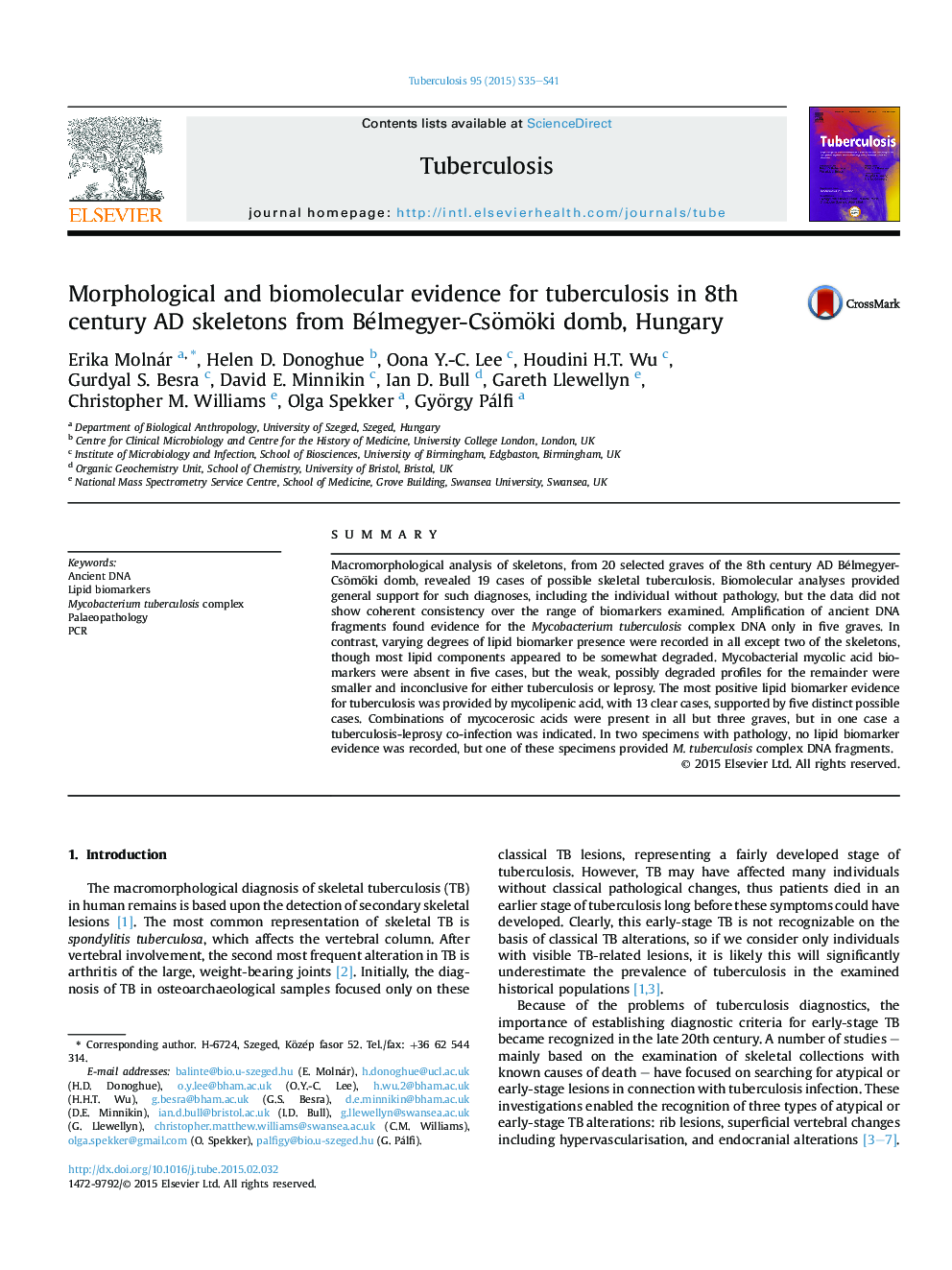| Article ID | Journal | Published Year | Pages | File Type |
|---|---|---|---|---|
| 2401465 | Tuberculosis | 2015 | 7 Pages |
SummaryMacromorphological analysis of skeletons, from 20 selected graves of the 8th century AD Bélmegyer-Csömöki domb, revealed 19 cases of possible skeletal tuberculosis. Biomolecular analyses provided general support for such diagnoses, including the individual without pathology, but the data did not show coherent consistency over the range of biomarkers examined. Amplification of ancient DNA fragments found evidence for the Mycobacterium tuberculosis complex DNA only in five graves. In contrast, varying degrees of lipid biomarker presence were recorded in all except two of the skeletons, though most lipid components appeared to be somewhat degraded. Mycobacterial mycolic acid biomarkers were absent in five cases, but the weak, possibly degraded profiles for the remainder were smaller and inconclusive for either tuberculosis or leprosy. The most positive lipid biomarker evidence for tuberculosis was provided by mycolipenic acid, with 13 clear cases, supported by five distinct possible cases. Combinations of mycocerosic acids were present in all but three graves, but in one case a tuberculosis-leprosy co-infection was indicated. In two specimens with pathology, no lipid biomarker evidence was recorded, but one of these specimens provided M. tuberculosis complex DNA fragments.
